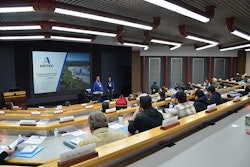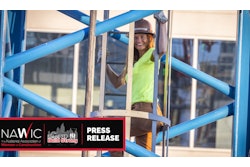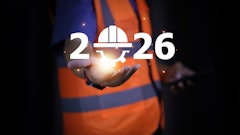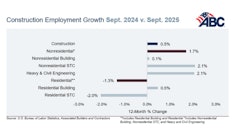
There is a generational shift in the construction workforce. For companies, this could be a crisis — or an opportunity. The construction industry needs 439,000 new workers this year, while 41% of the current workforce will retire within the next five years. This workforce shift creates a major opportunity for companies that can attract and keep good people.
The workers filling these roles grew up with smartphones and instant access to information. They expect different things from their employers than previous generations did. Younger workers want to understand the "why" behind changes. Why did a deadline change? What caused a safety protocol update? How do their tasks impact the overall project? Instead, they often get just the "what" — instructions without context, leaving workers feeling like they're following orders instead of contributing to something meaningful.
Companies that fix this communication gap win on multiple fronts — and it’s not just about attracting and retaining Gen Z employees. Consider the operational impact: The third biggest roadblock frontline workers face that limits productivity is a lack of real-time communication. For managers, that’s their top challenge. Better communication can recover considerable productivity gains by reducing confusion, preventing rework and avoiding delays. That means fewer mistakes, safer job sites and projects that finish on time and on budget. One construction company proved this by cutting equipment inspection times by 50% simply by improving the flow of information between teams.
Attracting the next generation of workers starts with giving frontline workers the context they want and the tools they need to succeed.
Why Workers Stay (And Why They Don’t)
Work-life balance drives construction workers away when communication breaks down. Last-minute schedule changes without explanation disrupt personal plans. Safety updates that don't reach crews create anxiety. Project decisions made without frontline input make workers feel like their experience doesn't matter.
Companies that prioritize employee well-being build trust through effective communication. They build connections through effective communication. Workers stay when they receive meaningful recognition, get feedback that helps them grow and have honest conversations about their career path. When supervisors explain why changes are happening, workers feel like trusted team members rather than followers. This foundation of trust turns current employees into the best recruitment tool a company can have, but only when workers feel heard enough to actually recommend their job to others.
Clear communication matters from the very first day. New hires need task automation that shows them exactly what to do, language support so diverse crews can access information and mobile training that works on actual job sites. When workers understand their roles and feel prepared from day one, they're more likely to stay and contribute to positive team dynamics.
Safety That Actually Works
Better communication improves project timelines and can save lives. Construction workers face real dangers every day and need safety systems that work as hard as they do.
Digital tools transform how safety functions on job sites. Workers can report hazards from their phones in less time than it takes to find a working pen and track down paperwork. Near-miss reporting becomes something workers actually use when the process is simple and mobile-friendly. Mobile access means reporting happens in real time, not at the end of a shift when details fade. Workers can document unsafe conditions immediately with photos and location data that help supervisors fix problems faster.
The real power comes when workers see results. When hazard reports lead to real changes on the job site, workers become more engaged in building safety culture. This creates a positive cycle where workers feel their input matters and continue reporting issues before they become accidents. Digital reporting also reveals patterns supervisors might miss, like how a safety issue showing up in multiple reports across different crews can be addressed company-wide before it causes harm.
Traditional safety programs often feel like something done to workers rather than with them. The difference is worker participation. When safety reporting is quick, mobile and leads to visible improvements, workers become active partners in keeping themselves and their teammates safe rather than just following rules written on a clipboard. Safety becomes a culture, not a checklist.
This shift from passive compliance to active engagement improves safety outcomes while showing workers that their voice matters. This strengthens the same sense of trust and connection that keeps them from looking for work elsewhere.
Turning Job Sites into Communication Success Stories
One leading construction company reduced equipment inspection times by 50% by streamlining the flow of information between teams using a mobile platform. They also saw communication campaigns reach 40% open rates and ensured updates reached frontline workers instantly. Digital workflows replaced paper-based processes, and frontline workers gained access to company communications that were previously only available to office staff.
Construction companies looking to replicate these results should focus on:
- Real-time information flow. Workers need instant access to schedule changes, safety updates and project modifications. When information reaches everyone simultaneously, teams can adapt quickly without costly delays or misunderstandings.
- Mobile-first approach. Construction teams move between sites, floors and work areas throughout the day. Communication systems must travel with workers, on their phones, rather than living on desks or bulletin boards they rarely see.
- Two-way communication channels. Create systems where workers can ask questions, report issues and provide feedback without hunting down supervisors. This prevents small problems from becoming expensive mistakes.
- Eliminate information silos. Office staff and frontline workers often operate with different levels of access to company information. Bridging this gap helps everyone understand how their work connects to larger project goals.
- Streamline administrative processes. Digital workflows for equipment inspections, time-off requests and document access reduce administrative bottlenecks that slow down projects. When workers can handle routine tasks independently, managers can focus on project execution.
Building the Next Generation of the Construction Workforce
The best site managers know their frontline teams well and choose technology that makes the team’s work simpler, not more complicated. These companies focus on cutting through chaos while developing their people.
Successful construction companies build clear lines of communication between workers, leadership and project information. They create safety cultures where workers participate because they want to, not just because they have to. When workers understand how their daily work connects to project success, engagement follows naturally.
The companies that come out ahead won't necessarily be those that spend the most money or buy the latest equipment. They'll be the ones that figure out how to connect with their people and create places where skilled workers want to stick around for the long haul.




















